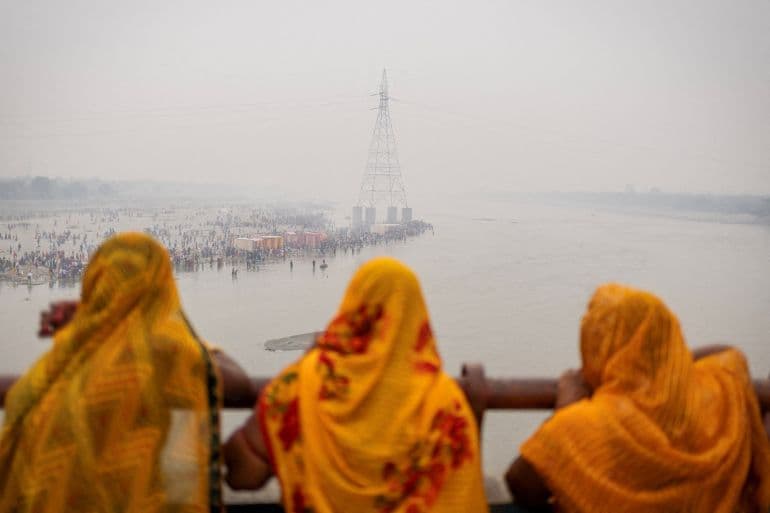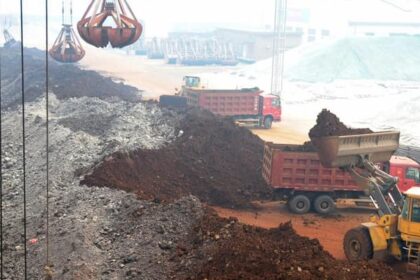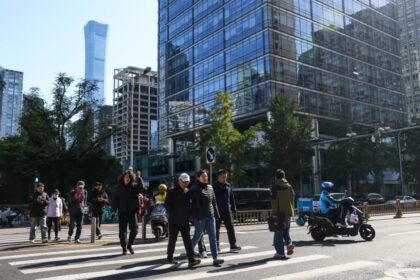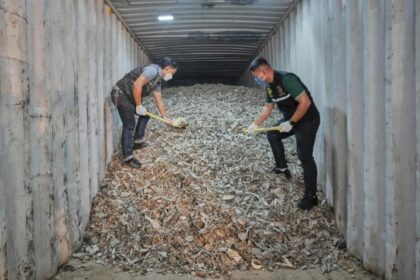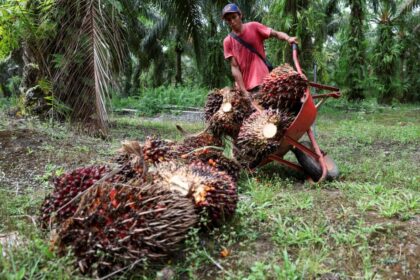A high stakes bid to wash the air
New Delhi entered its peak smog season with a fresh and highly visible tactic, an aircraft spraying chemicals into low winter clouds in the hope of triggering rain to wash soot and dust from the air. The cloud seeding flight on Tuesday was carried out with scientists from the Indian Institute of Technology Kanpur, using silver iodide and sodium chloride flares to nudge moisture into forming raindrops. The goal was simple, coax even a short shower that could knock down pollution and bring relief to millions of residents breathing air many times over health guidelines.
Officials described the effort as a measured trial that would guide a broader plan if conditions cooperate. The small aircraft took off from Kanpur and seeded patches of cloud over parts of Delhi where haze had thickened after the Diwali holiday period. The operation, the first of its kind for pollution control in the capital in decades, is part science experiment, part emergency response for a city where seasonal smog has become a public health crisis.
Early readings suggested the citywide air quality index stayed in the very poor category, near 304 to 306, according to official monitoring. That level is unhealthy for all groups and can aggravate respiratory and heart ailments. New Delhi and its surrounding region, home to more than 20 million people, regularly records particulate levels that spike to many times the World Health Organization limit in winter. The haze is a mix of vehicle exhaust, industrial emissions, construction dust, garbage burning and smoke from crop residue fires in nearby states, all trapped near the ground by cold, still air.
What happened in the first trials
Authorities say the Tuesday trial used a Cessna aircraft loaded with eight flares containing silver iodide and salt crystals. The aircraft seeded clouds for roughly half an hour in areas of north and northeast Delhi. Meteorologists reported that cloud humidity was only around 10 to 20 percent, far short of the 50 to 60 percent that typically yields the best chance of rain after seeding. The India Meteorological Department reported no measurable rain in the capital through the evening. Two trace showers were recorded in nearby Noida, about 0.1 millimeters, and Greater Noida, about 0.2 millimeters.
The Delhi government said that despite the lack of rain, sensors in test neighborhoods showed a modest dip in particulate levels after the operation. In Mayur Vihar, Karol Bagh and Burari, authorities reported PM2.5 readings falling from roughly 221 to 207, 230 to 206 and 229 to 203, while PM10 values also edged down. These are narrow snapshots and do not reflect the city average, which remained very poor the next morning. Still, the numbers are being used to argue for more tests when moisture improves.
Manindra Agarwal, director at IIT Kanpur and a key scientific adviser to the project, said the technique can provide temporary relief if clouds cooperate, but the effect will fade as emissions continue.
“If it rains, pollution comes down, but it will rise again because the source has not gone. Whenever the cloud cover is there, one has to repeat the process.”
Officials also noted that rainfall after seeding can arrive anytime between 15 minutes and four hours, depending on cloud dynamics. The city has budgeted about 3.21 crore rupees for five trials, which works out to roughly 64 lakh per flight. Three attempts have been conducted so far, and more sorties are planned in coming days if suitable cloud cover appears. A longer program through February is under consideration, subject to results and weather windows.
How cloud seeding works
Cloud seeding aims to gently tilt the microphysics inside a cloud. Many clouds hold supercooled droplets that will not fall as rain without a trigger. By introducing particles such as silver iodide, which mimic the structure of ice, or salt particles that attract moisture, seeding provides tiny surfaces where water molecules can gather, freeze or grow, then collide and form drops heavy enough to fall. The approach does not create clouds from clear skies. It can only enhance precipitation in clouds that already have sufficient moisture and the right temperature profile.
What chemicals are used
Silver iodide is commonly used for cold cloud seeding because its crystal lattice promotes ice formation. Sodium chloride and other salts can be used in warmer clouds to encourage droplet growth. The amounts released are small, dispersed over large areas, and regulated during flight plans. Some scientists have flagged concerns that repeated use could allow salts or silver compounds to build up in soil or water over time. Evidence on long range environmental effects is limited, so researchers advise careful monitoring of deposition and periodic checks around seeded corridors, especially if flights become frequent.
Results from cloud seeding programs worldwide are mixed. Independent evaluations in the western United States have found precipitation gains in the range of single digit percentages to the low teens during favorable conditions. The United Arab Emirates reports higher increases during specific missions, while Chinese authorities have long used cloud seeding for weather control around major events. Proving causality is hard because no two clouds are identical, and natural variability often masks small changes. In Delhi, earlier cloud seeding attempts date back to 1957 and 1972 for drought relief. A plan in 2023 did not advance amid approvals and weather delays. The current trials mark the first major attempt in more than five decades to use seeding for smog mitigation.
Why Delhi chokes each winter
Delhi’s smog season is driven by both emissions and physics. As temperatures drop, a layer of cool, dense air settles near the surface and acts like a lid. Pollutants from tailpipes, chimneys, construction sites and trash fires accumulate underneath this lid. In late October and November, winds slacken and regional crop residue burning adds smoke during a narrow harvest window. The result is a thick mix of fine particles called PM2.5 and PM10 that scatters sunlight and reduces visibility. PM2.5, small enough to penetrate deep into lungs and enter the bloodstream, is tied to increased risk of asthma attacks, heart disease and strokes.
Local and regional authorities activate a graded response when pollution spikes. Measures include halting most construction and demolition, limiting the use of diesel generators, sending water sprinklers and vacuum sweepers onto busy roads, and curbing some truck movements. These steps can cut dust and soot at the margins. They do not stop the steady flow of new emissions. That is why air can improve after a rain or a wind shift, then degrade again within days when conditions turn stagnant.
What experts say about artificial rain
Supporters of the trials argue that when the right clouds appear, artificial rain can be one more tool to reduce peak pollution and improve visibility without imposing sweeping shutdowns. Many researchers and public health experts counter that cloud seeding is a tactical fix at best and that real progress will come from cutting emissions at the source.
Krishna Achuta Rao, a professor at the Indian Institute of Technology in New Delhi, argued that weather modification cannot substitute for stronger rules on pollution control.
“Cloud seeding is ineffective for reducing air pollution. It may move the numbers for a day or two. Strong laws that cut emissions from all sources are the only way to clean the air.”
Public health advocates echo that concern. Anumita Roychowdhury of the Centre for Science and Environment said artificial rain can give brief relief but cannot replace steady control of pollution at source.
“The impact lasts hours to a couple of days, then the haze returns. Investment should target real reduction of emissions on the ground.”
Government scientists say that is exactly how the pilot is being framed, as a limited intervention during rare weather windows, not a replacement for deeper cuts. They also point to city measurements that suggested PM levels fell at some seeded locations, which they plan to study further. The central questions now are consistency, cost and whether the approach can deliver enough relief to matter during severe episodes.
What authorities are doing beyond cloud seeding
Delhi’s campaign against smog already spans transport, industry, construction and waste. Policies include stricter inspection of vehicles, accelerated adoption of cleaner fuels and electric buses, tighter controls on industrial stack emissions, and shutdown orders for older coal units around the capital. Crews sprinkle water at large building sites, cover loose material and run vacuum sweepers on high traffic corridors. Odd even restrictions on private cars have been tried in past seasons during severe episodes. These tools help, yet compliance gaps remain and enforcement varies across the region.
Many of the most effective measures lie outside city limits. Cutting smoke from farm fires requires viable alternatives for crop residue, like in situ decomposition and affordable access to balers and mulchers. Truck emissions demand stronger inspection regimes and cleaner freight corridors across states. Power and industry need consistent enforcement of emission limits, continuous monitoring and predictable penalties. City agencies can also expand clean public transport, improve last mile connectivity, and maintain dust control on roads year round. Smarter data use, including continuous monitoring and transparent reporting, can focus effort on the largest sources.
What comes next
Environment officials say more cloud seeding flights are planned if cloud cover and moisture improve, including during western disturbances that occasionally bring winter rain to the plains. The aircraft will target sectors aligned with the wind direction to maximize the chance that any new precipitation falls over the city rather than drifting away. Planners say each sortie will be followed by side by side measurements of particulate levels and precipitation in seeded and non seeded areas to gauge impact.
Several scientists and civic groups are calling for clear criteria to judge success, independent evaluation, and public reporting on flight paths, chemical loads and observed outcomes. They also want basic environmental monitoring to track whether repeated seeding leaves measurable deposits on farmland or in groundwater. Regardless of whether future flights trigger rain, the health stakes point to the same conclusion voiced by most experts, lasting relief depends on sustained cuts to emissions from vehicles, industry, power, dust and burning across the wider region.
What to Know
- Delhi conducted rare cloud seeding trials to induce artificial rain and wash pollution from the air.
- A Cessna aircraft released silver iodide and sodium chloride flares into clouds over several neighborhoods.
- No measurable rain fell in the capital on Tuesday, with only trace showers logged in Noida and Greater Noida.
- The citywide air quality index stayed in the very poor range, near 304 to 306, despite the trial.
- Officials said sensors at some test sites showed drops in PM2.5 and PM10 after seeding, which will be studied further.
- Scientists reported cloud humidity of 10 to 20 percent, far below the 50 to 60 percent usually needed for seeding to work.
- The project cost is about 3.21 crore rupees for five trials, and more flights are planned if conditions permit.
- Experts warn that artificial rain offers brief relief at best and stress the need for stronger emission control across sectors.
- Authorities continue separate measures including construction curbs, limits on diesel generators and road dust control.
- Long term gains depend on cleaner transport, stricter industrial controls, better waste and dust management, and alternatives to crop burning.


